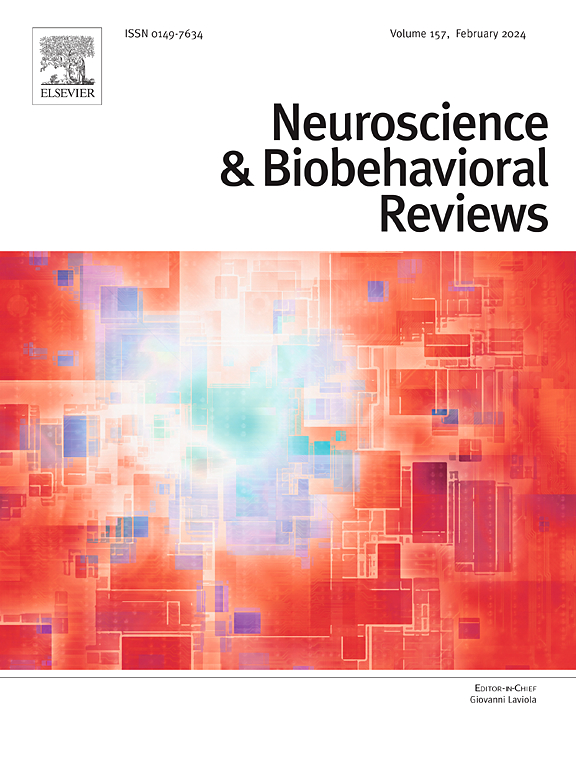Dose-response effects of exogenous oxytocin on social cognition: A systematic review
IF 7.9
1区 医学
Q1 BEHAVIORAL SCIENCES
引用次数: 0
Abstract
Oxytocin, a neuropeptide known for its role in social bonding, has garnered considerable attention for its potential to enhance social cognition in humans. Intranasal administration of oxytocin is the standard method in exogenous oxytocin research. This systematic review critically examines the effects of exogenously administered oxytocin on three core components of social cognition: emotion recognition, empathy, and interpersonal trust. By comparing findings across studies using intranasal oxytocin doses ranging from 1 IU to 48 IU in healthy adult humans, we evaluate evidence for a potential dose-response relationship. The majority of studies administered a standard dose of 24 IU and generally reported significant improvements in emotion recognition, empathy, and trust. However, divergent findings at this dose have also been observed. Evidence for both lower and higher doses remains mixed. Much of the support for the Inverted-U Curve hypothesis - suggesting that oxytocin’s effects follow a nonlinear trajectory with optimal outcomes at moderate doses - comes from studies lacking direct dose comparisons. Furthermore, the effects of oxytocin on social cognition appear to be strongly moderated by individual and contextual factors, raising questions about the generalizability of the Inverted-U model. Additional research is necessary to clarify the conditions under which dose-dependent effects occur.
外源性催产素对社会认知的剂量-反应效应:一项系统综述。
催产素是一种神经肽,以其在社会联系中的作用而闻名,因其增强人类社会认知的潜力而引起了相当大的关注。鼻内给药是外源性催产素研究的标准方法。这篇系统综述批判性地考察了外源性催产素对社会认知的三个核心组成部分的影响:情绪识别、同理心和人际信任。通过比较在健康成人中使用鼻内催产素剂量从1 IU到48 IU的研究结果,我们评估了潜在剂量-反应关系的证据。大多数研究给予24国际单位的标准剂量,通常报告在情绪识别、同理心和信任方面有显著改善。然而,在这一剂量下也观察到不同的结果。低剂量和高剂量的证据仍然是混杂的。倒u曲线假说的大部分支持都来自缺乏直接剂量比较的研究。倒u曲线假说认为,适度剂量的催产素的效果遵循非线性轨迹,并具有最佳效果。此外,催产素对社会认知的影响似乎受到个体和环境因素的强烈调节,这对倒u型模型的普遍性提出了质疑。需要进一步的研究来阐明剂量依赖效应发生的条件。
本文章由计算机程序翻译,如有差异,请以英文原文为准。
求助全文
约1分钟内获得全文
求助全文
来源期刊
CiteScore
14.20
自引率
3.70%
发文量
466
审稿时长
6 months
期刊介绍:
The official journal of the International Behavioral Neuroscience Society publishes original and significant review articles that explore the intersection between neuroscience and the study of psychological processes and behavior. The journal also welcomes articles that primarily focus on psychological processes and behavior, as long as they have relevance to one or more areas of neuroscience.

 求助内容:
求助内容: 应助结果提醒方式:
应助结果提醒方式:


